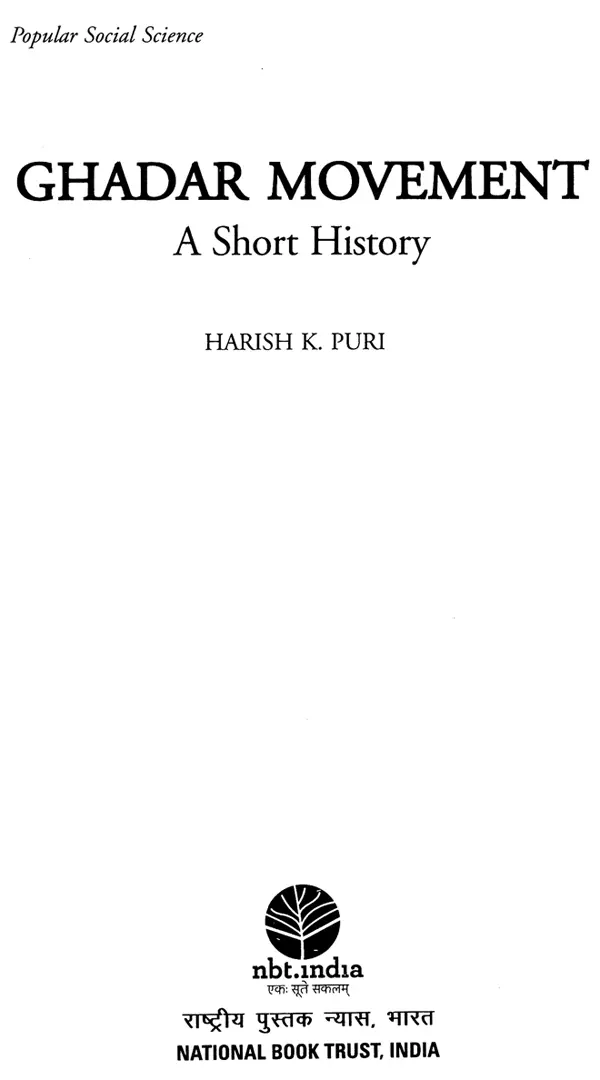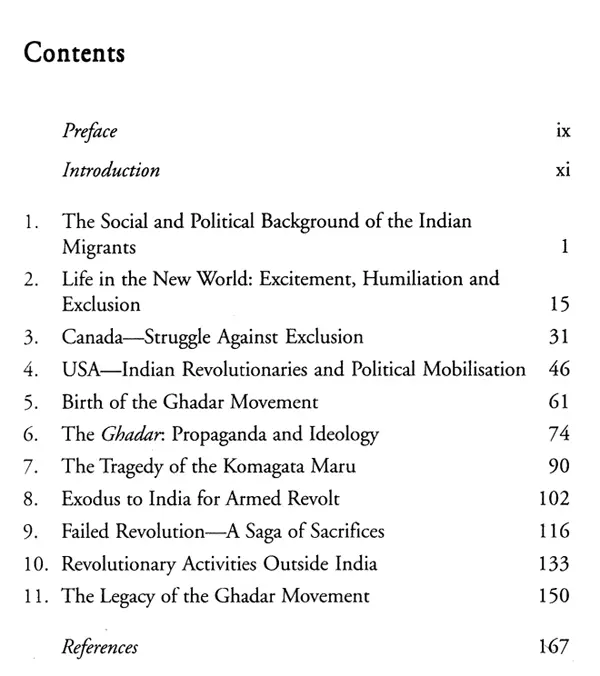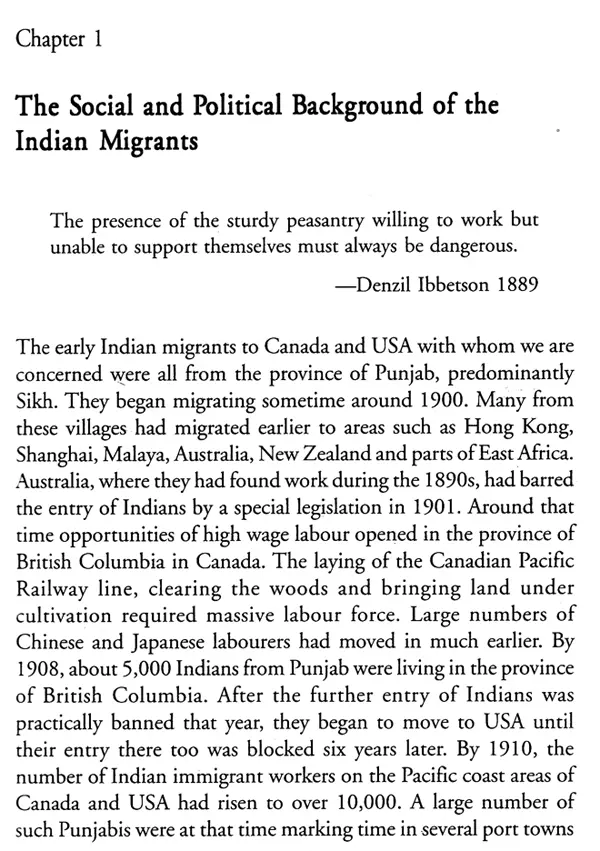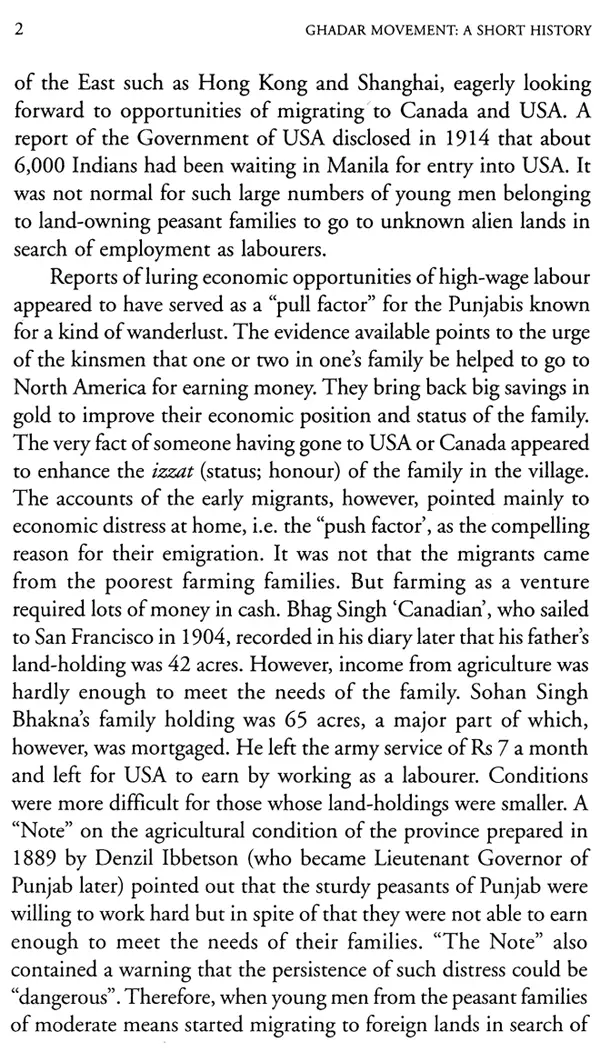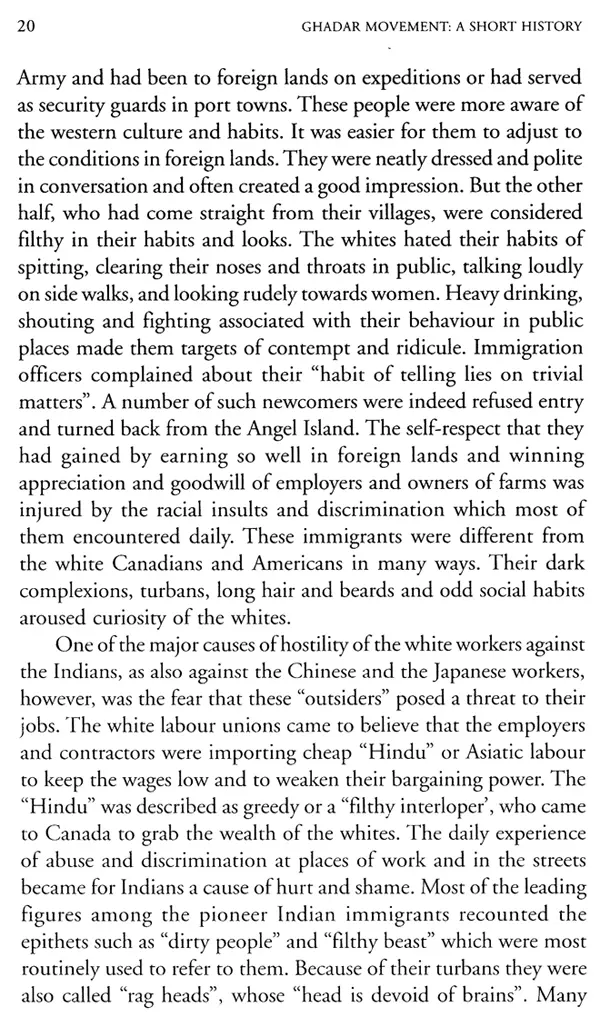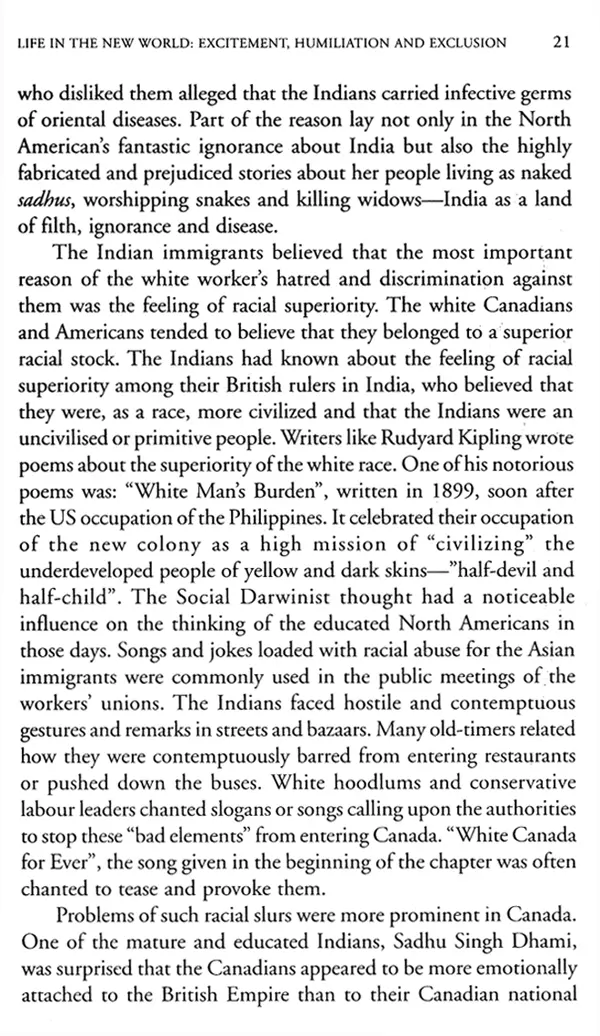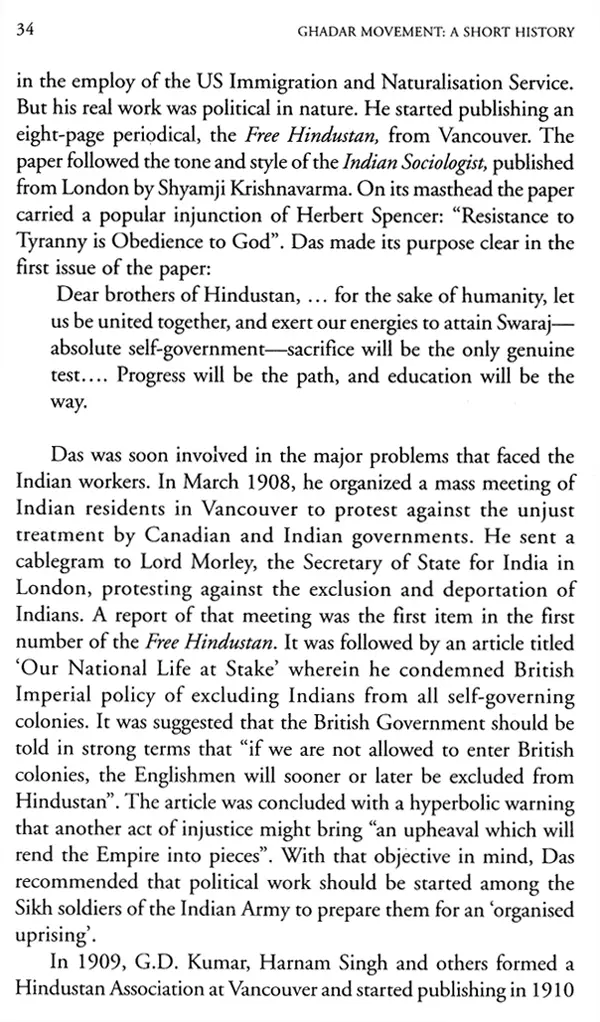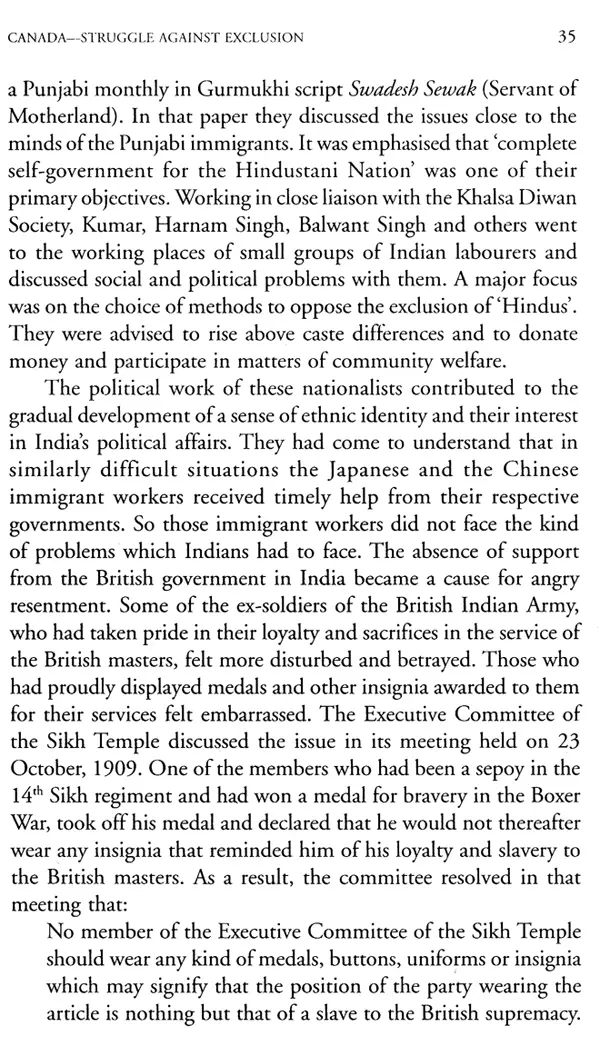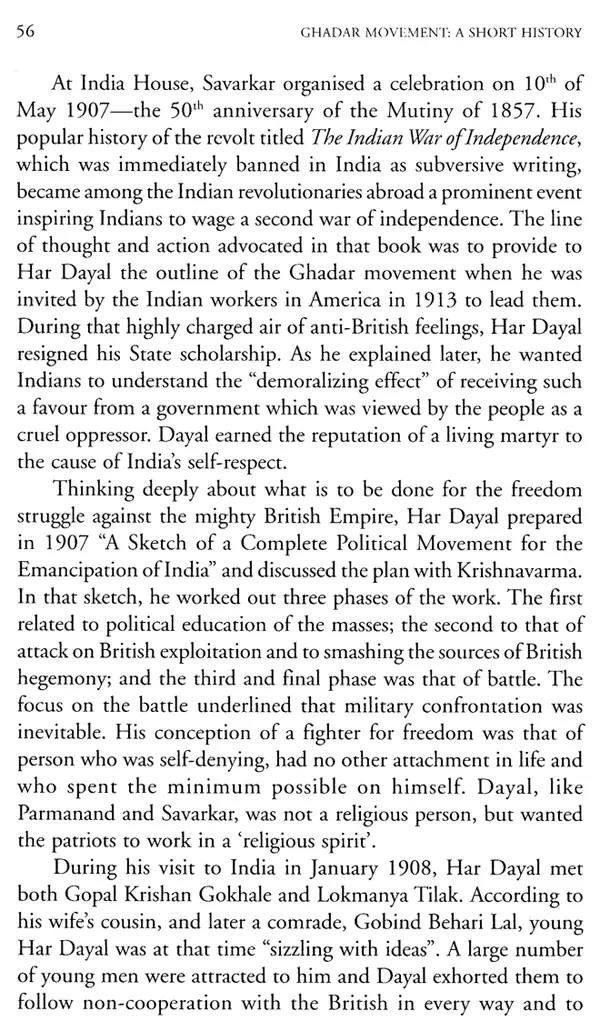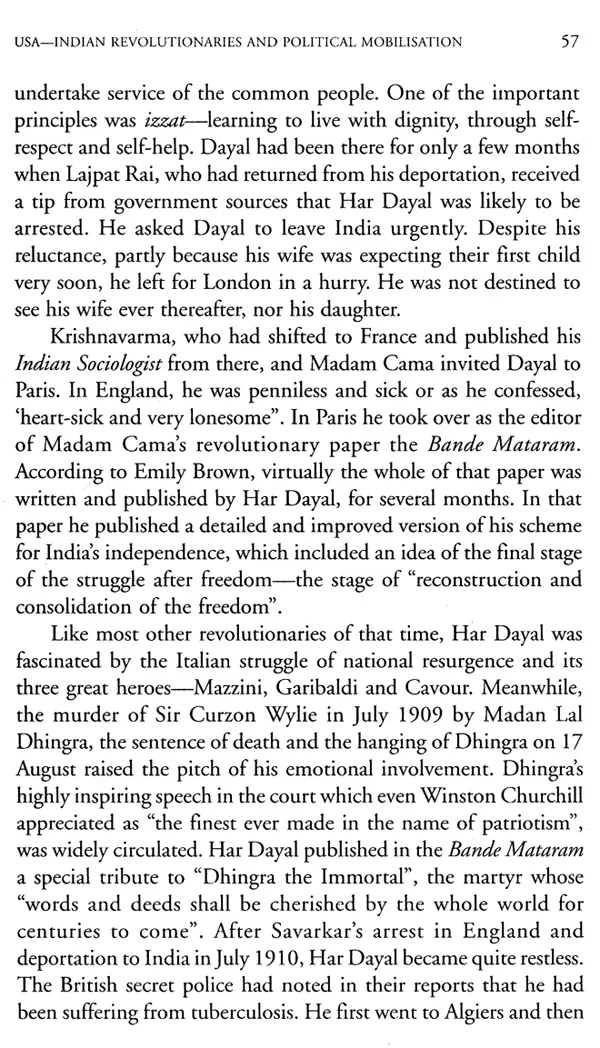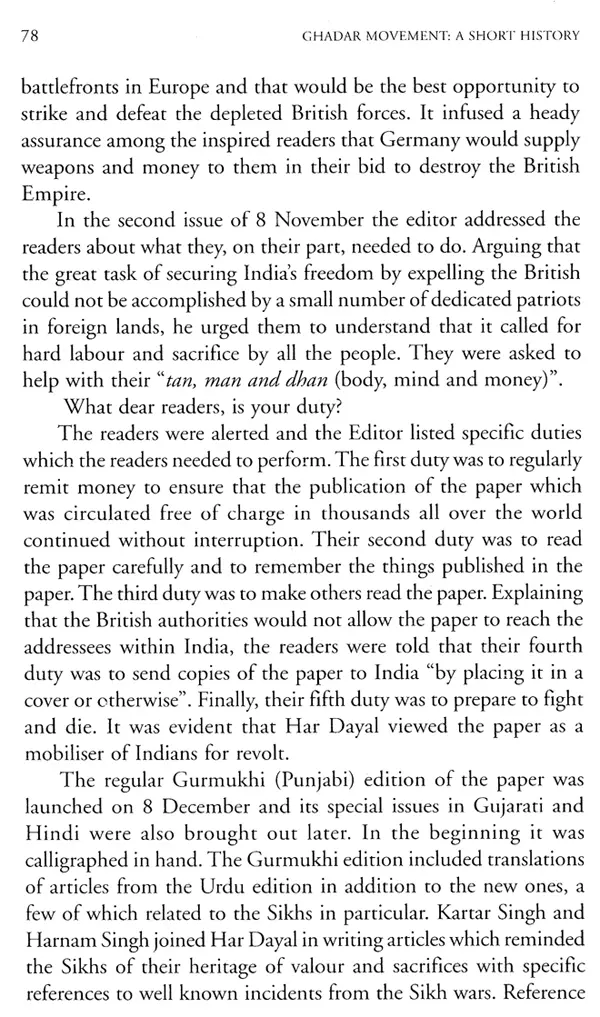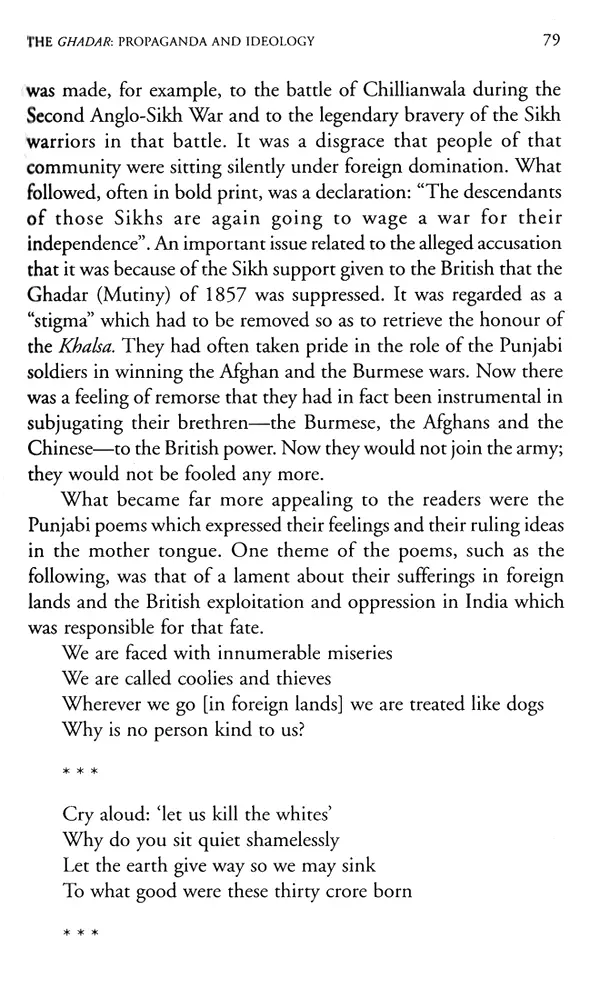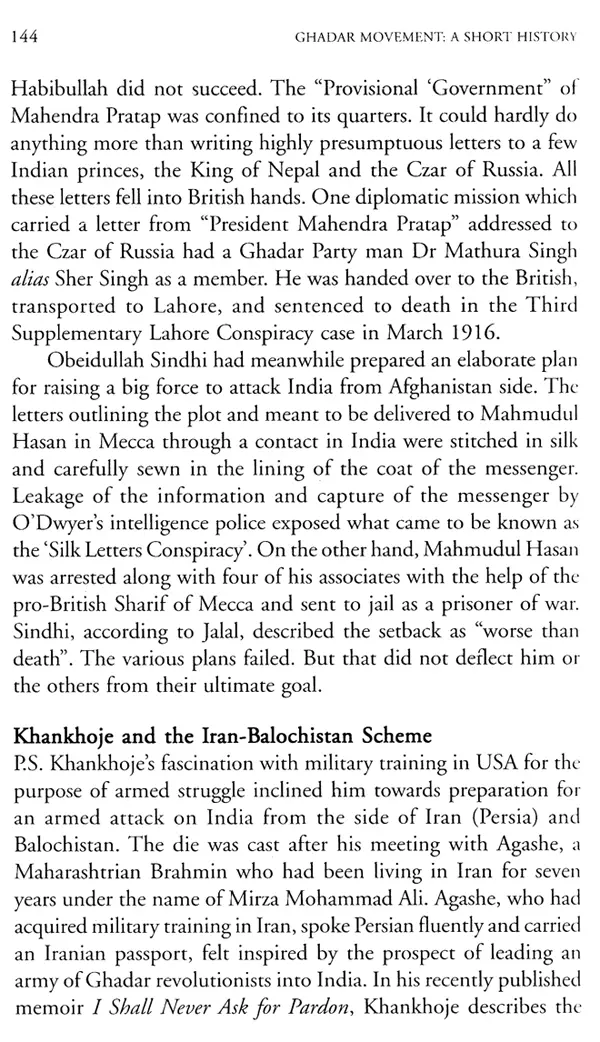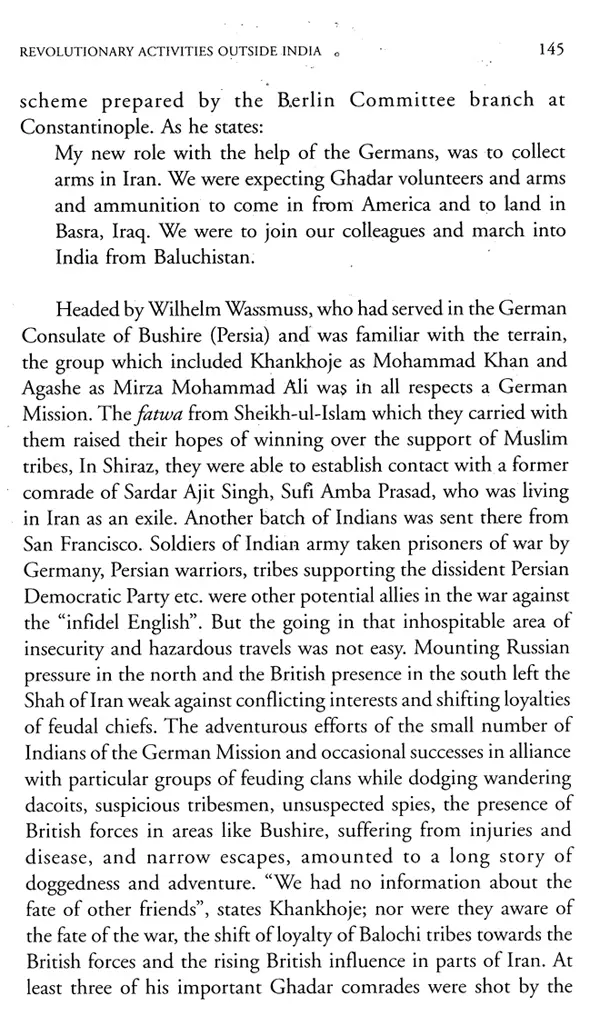
Ghadar Movement - A Short History
Book Specification
| Item Code: | UAX357 |
| Author: | Harish K Puri |
| Publisher: | National Book Trust, India |
| Language: | English |
| Edition: | 2015 |
| ISBN: | 9788123762821 |
| Pages: | 168 |
| Cover: | PAPERBACK |
| Other Details | 8.50 X 5.50 inch |
| Weight | 230 gm |
Book Description
The Ghadar Movement was in many ways a novel struggle for the freedom of India. It was launched in North America in 1913 by the combined efforts of Sikh migrant workers from Punjab and a small number of revolutionary exiles like Lala Har Dayal. They dreamt of complete independence of India like that of USA. Several thousands returned to India at the beginning of the World War to overthrow the British rule through an armed insurrection like the Ghadar (Mutiny) of 1857. This book is a short history of the genesis and rise of the movement, its transnational dimensions, romance of patriotism, limitations and illusions, tremendous sacrifices: and its legacy that inspired Bhagat Singh and other revolutionaries.
Harish K. Puri retired as Professor of Political Science and Head B.R. Ambedkar Chair at Guru Nanak Dev University Amritsar. He has researched and published extensively on political movements, federalism, dalits, politics of ethnicity, caste and religion and terrorism. His books include Ghadar Movement: Ideology, Organisation and Strategy; Terrorism in Punjab: Understanding Grassroots Reality (co-author); Dalits in Regional Context (edited); and Social and Political Movements (co-edited).
In 2013, one hundred years will have passed since the founding of the Ghadar movement. But one finds that even among the educated people there is little awareness about the movement, its stalwart leaders like Har Dayal and Sohan Singh Bhakna, and the contribution it made to India's struggle for freedom. When Professor Bipan Chandra, Chairman National Book Trust, asked me to prepare a book on the Ghadar movement for the general reader, the mandate was that it should be based on meticulous research and should capture the true spirit of the struggle. I have drawn much from my earlier work, Ghadar Movement: Ideology, Organisation and Strategy (1983; rev.1993), and have benefited a great deal from further study and reflection. The publication of this book by the National Book Trust of India may take the story of this movement to a fairly large number of new readers and hopefully at least some of them may want to know more. This is in a way my homage to the freedom fighters of India who dreamed of creating a just and caring society.
Some acknowledgements may be in order. I must express my gratitude to Bipan Chandra first. Without his affectionate nudging I may not have been able to prepare the book. I have benefited from the recent publications by Harold A. Gould, Savitry Sawhney and Ayesha Jalal and the Ph. D dissertation (Duke University) by Maia Ramnath, all included in the short list of references. V.N. Datta has been a regular source of inspiration, for which I am thankful to him. I must acknowledge the assistance of Harsharan Singh, Amarjit Chandan and Rahul Puri who read the manuscript and helped me by way of editing the manuscript. For the photographs I appreciate the generous help by Chandan, Sohan Pooni and Sita Ram Bansal. No words may be adequate to express my deep appreciation for the support my partner Vijay Puri has given to me, always. And finally, I must express my thanks to the editor Binny Kurian and the staff of the National Book Trust, India for their dedication and professional skill in the publication of this book.
Not many historians of India's struggle for freedom have taken a serious note of the role played by the Ghadar Movement. It originated outside India, in Oregon and California (USA), in 1913. Lala Har Dyal, a renowned radical intellectual, was its "inspirational genius". It was the first openly declared political struggle for complete independence of India. Beginning with moral outrage against the British, the end of the British Rule in India through an armed insurrection became its main objective. The movement was inspired by the dominant ideological thinking among the young revolutionary Indians living abroad during the period 1905-1920. It gave birth to dreams of freedom, of founding in India a secular democratic republic like that of USA and creating a new social order based on social good. It is believed that since the Ghadar movement originated outside India "it could never present itself as an indigenous movement". That may well be part of the reason for the less attention given to its role in India's freedom struggle. It was a movement of the Punjabi Sikh patriots of India. But until after the massive outrage caused by the Jallianwala Bagh to the semi-literate Indian workers. Har Dayal's lectures at their meetings and his writings in the Ghadar started a churning in the minds of these men. They learnt about the reasons for India's poverty and famines. The writings of Dadabhoy Naoroji and Mahadev Govind Ranade had laid bare the details of the drainage of India's wealth to England. The prosperity of the Imperial West was linked to the increasing poverty, hunger and oppression in the colonized countries. It was a beginning of the understanding of what came to be known later as "development of under development". They started learning how the British East India Company destroyed India's industry and drained away her wealth and why millions of Indians perished in repeated famines caused by the plunder. America was, at that time, known for freedom of political propaganda and was home to revolutionaries in exile and freedom fighters of many countries such as Ireland, Mexico, Egypt, China and Russia. The association of Indian revolutionaries with the nationalists of other countries opened their minds to international political issues and needs of solidarity of the colonised peoples against imperialism.
**Contents and Sample Pages**
